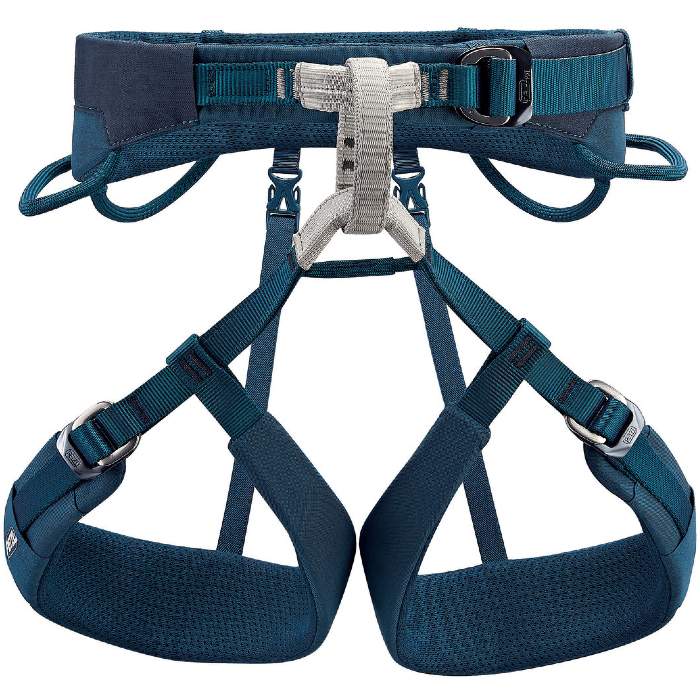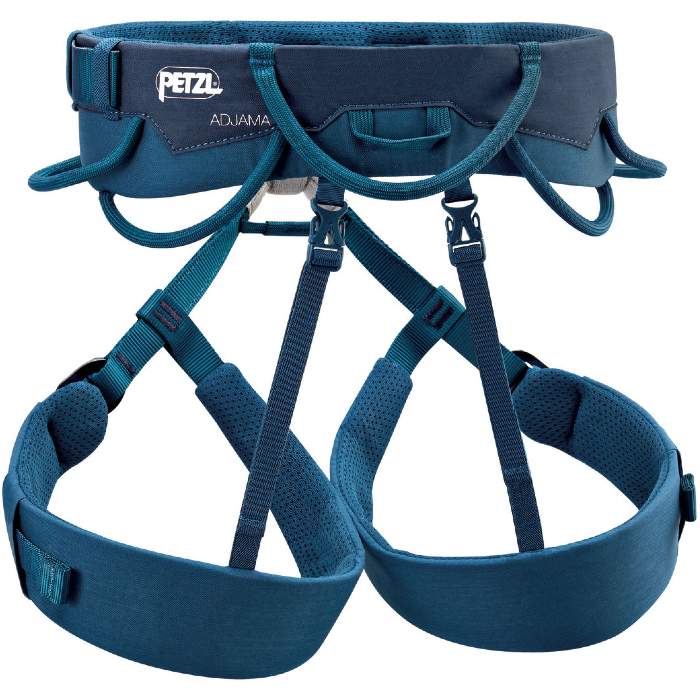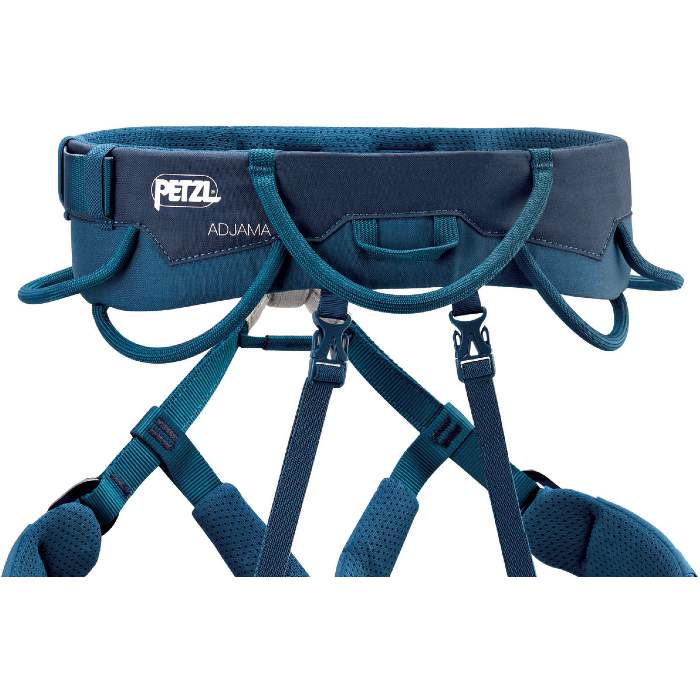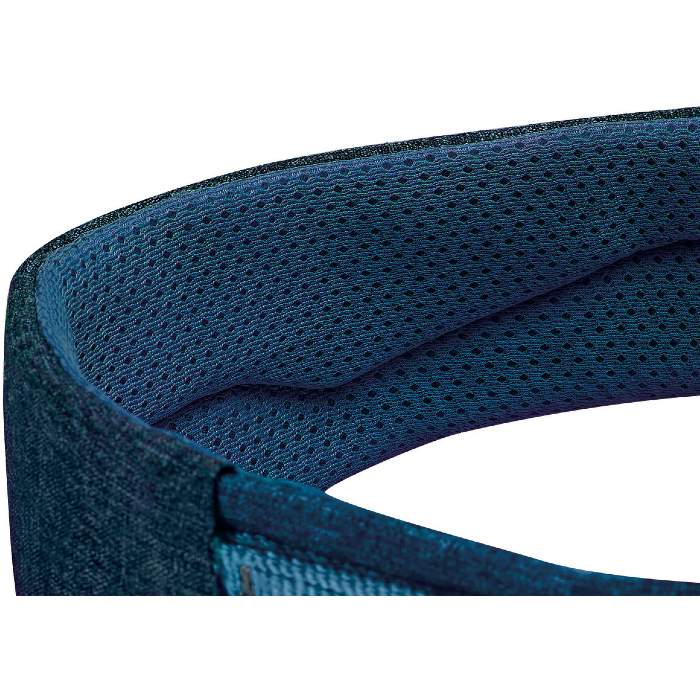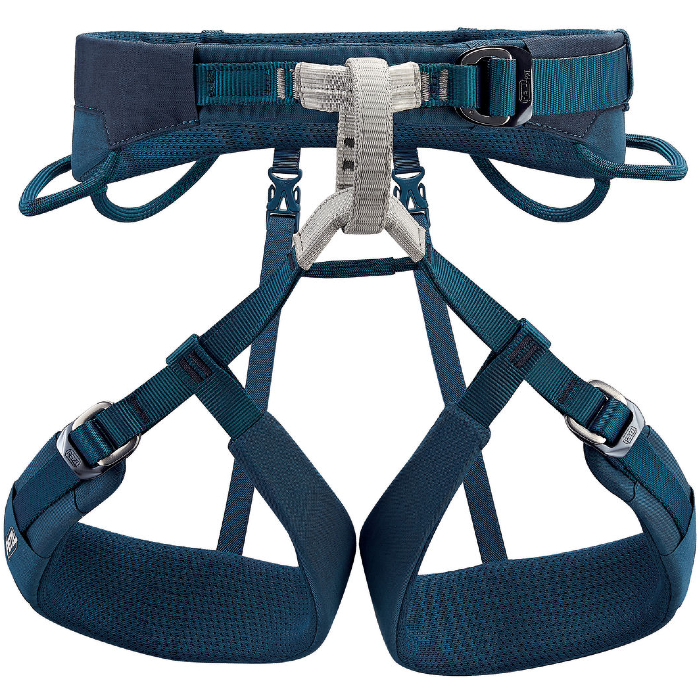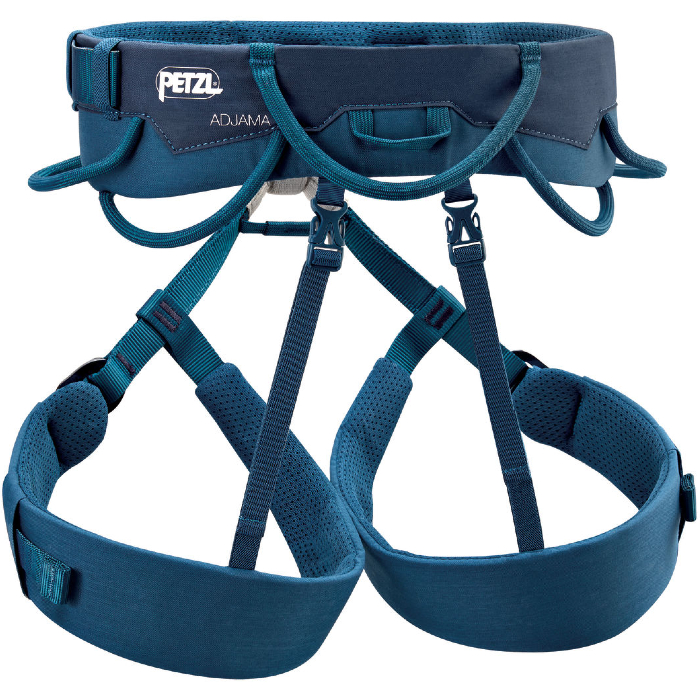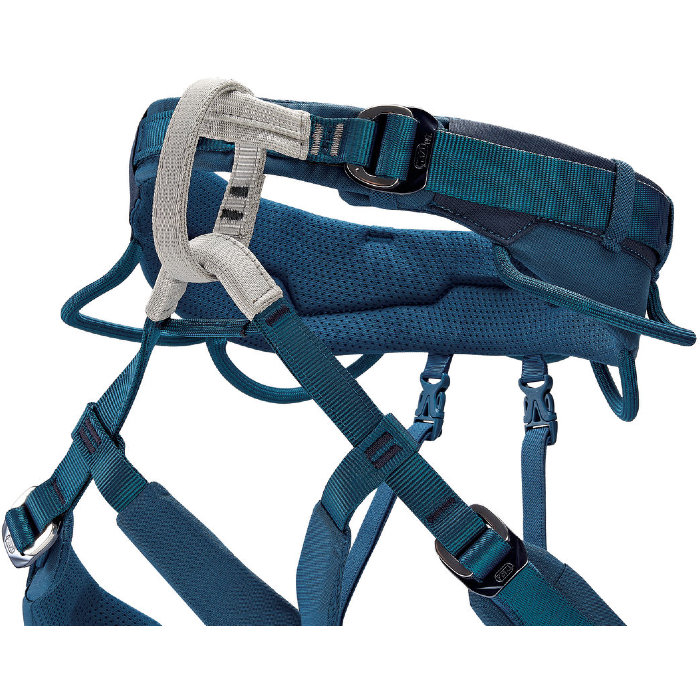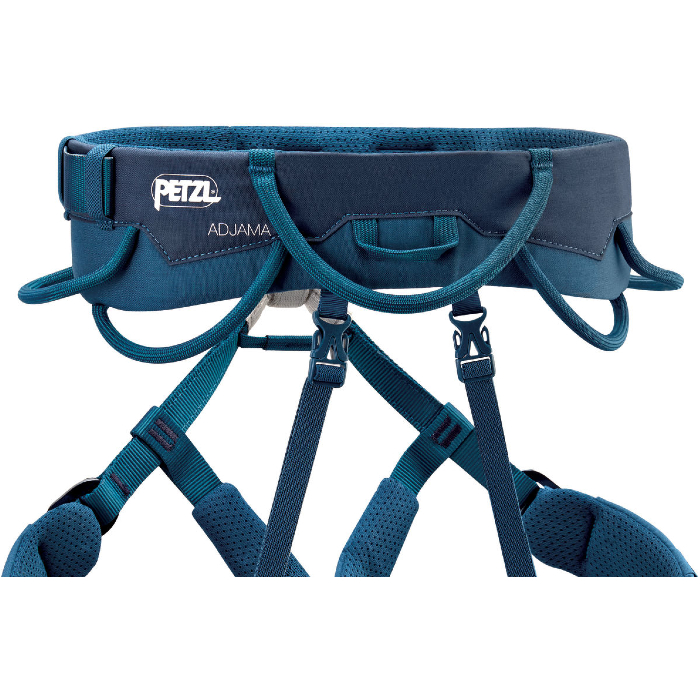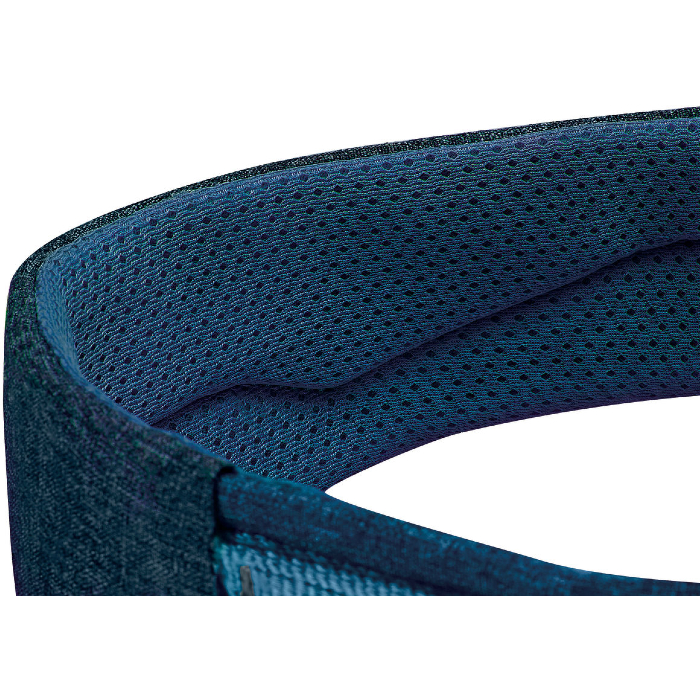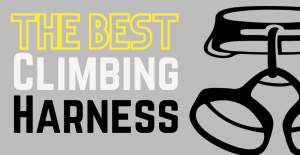Adjama 2024
Description
Climbing and mountaineering harness with adjustable leg loops, for single and multi-pitch climbing.
Designed for technical mountaineering, trad climbing and multi-pitch climbing, the ADJAMA harness is equipped with adjustable leg loops that adapt to all climbers in all seasons. The padded leg loops and waistbelt ensure maximum comfort without hindering freedom of movement. The five equipment loops carry all the equipment required for progression on ice or rock, and make it easily accessible during the activity.
Description
- Comfortable to wear:
- padded waistbelt and leg loops
- wide waistbelt provides comfortable positioning
- ENDOFRAME Technology construction allows excellent weight distribution - Capacity for transporting a large quantity of equipment:
- two very large rigid equipment loops in front for transporting a lot of gear and for easy clipping and unclipping of carabiners
- two rear equipment loops are flexible, for bringing gear to the front and for comfort when carrying a backpack
- one large center rear equipment loop for carrying belay station gear, shoes or special equipment - Adaptability: leg loops adjustable with DoubleBack buckles, to adapt to different body types and to seasonal clothing
Specifications
- Material(s): nylon, polyester, EVA, polyurethane, aluminum, high-modulus polyethylene
- Harness comes in a protective carry bag
Retail price
When you click a link below and then checkout online, no matter what you buy (climbing gear or not), we get a small commission that helps us keep this site up-to-date. Thanks!
Weight (g)  WeightIn grams, the weight, as stated by the manufacturer/brand. If there are differences in weight (due to multiple sizes or optional accessories) we'll list them here. The default weight is the middle-most size, often this is size M. | 485 g S : 460 g / 16.2 oz |
| Fit | Unisex |
| Sizes | XS, S, M, L, XL, XXL |
Gear Loops  Number of Gear LoopsGear loops are used to hold gear (quickdraws, cams, etc) onto your harness. 4 gear loops is most common. 
0 - 1 Gear LoopsMost often on full body harnesses or guide/gym style harnesses. 2-3 Gear LoopsMostly found on lighter harnesses made for [ski] mountaineering or high-end sport climbing where weight is a high priority. 4 - 5 Gear LoopsThe standard/most common number for climbing harnesses. Perfect for sport and trad. More Than 6 Gear LoopsDesigned for long multi-pitch and big wall climbing, found on harnesses made to hold the maximum amount of gear. Worth ConsideringOccasionally, the number of gear loops will change on a harness model depending on the size. There could be 7 gear loops for the med/large but only 5 gear loops for the xsmall/small. In this case we list the highest number for the filters, and then write an explanation on the product page like, “Size S/XS can only fit 5 gear loops.” | 5 Gear loops |
Ice Clip Slots  Ice Clip SlotIce clipper slots are made to fit a carabiner that holds ice screws. These slots are generally only used by ice climbers but there is no disadvantage to having them on your harness. 
Less than 40% of harnesses will have ice clipper slots. And those harnesses will usually have 2 or 4 slots, often located next to, or between, the gear loops. | Yes, 1 |
| Belay / Tie-In | One Loop |
| Waist Buckle Type | Quick Adjust |
| Leg Buckle Type | Quick Adjust |
| Drop Seat | Yes |
Haul Loop  Haul LoopTrad climbers often look for a haul loop as they're intended to haul a rope (second line) or pack (while you climb the chimney). 
A haul loop can also hold shoes or other accessories. Although not the intended use, it is also commonly used to hold a chalk bag. | Yes (0kN) |
| Certification | CE, EN, UIAA |
| Size Chart | S (will fit the upper range of XS) |
Pajama?
by xFlavxCorex on 07/11/2021The Petzl Adjama is our Top Pick for Trad Climbing and Multi-pitch adventures because it combines comfort and gear carrying capacity, the two most critical components of any long-route harness. It is easily one of the most comfortable you can buy, and comes at a relatively affordable price. We preferred to use it only for these styles due to its bulk and weight, and chose something lower profile when heading out sport climbing or for the alpine.
The Petzl ADJAMA is a very comfy, well-featured climbing harness. Covering all your needs in one model, it firmly sits in the jack-of-all-trades category. Petzl's years of experience in harness design really shine through and there are no minor design flaws or annoying niggles here. It would be the perfect harness for the UK based all round climber, capable of doing everything from alpinism and Scottish winter to multi pitch mountain trad and even big walling; but it's probably best suited to days at the crag, which let's face it is what most of us do most of anyway. With a pretty fair price of £75 I predict it will become very popular with everyone from beginners purchasing their first harness, through to seasoned climbers who want one model for a bit of everything.
In the Gorges du Verdon we spent long days on walls filled with hanging belays. Weighing a hair over 17 ounces, the Adjama is twice the weight of my sport harness, but it is four times more comfortable. As we headed north to Céüse I wondered if I would notice the weight and regret having not brought a sport-specific harness. I didn’t. In fact, the width of the harness actually made me feel secure and confident, especially when facing those old-school Céüse runouts.
If you know of a good product video that should be here, let us know, and we'll put it up.
If you're looking for gear videos in general, check out our Vimeo and YouTube channels to see the newest gear.
Describes with words and helpful photos, how to protect your harness.
A checklist helping you monitor your harness health, helping to know when to retire your harness.
Helpful instruction for inspecting Petzl harnesses.
How to use Petzl Harness, warnings, lifetime with instructional pictures
A pictoral representation of UIAA-105 and EN-12277 standards for harnesses.
The UIAA equipment standard provides a baseline for equipment performance in a test lab under controlled conditions on new equipment. Although these test conditions are relevant to the conditions encountered climbing, conditions encountered at the crags and the condition of the equipment are equally important. This recommendation from the UIAA member federation The British Mountaineering Council (BMC) provides vital equipment information that is NOT explicitly addressed in the standard, particularly failure modes of the equipment and recommendations for the use, inspection, maintenance, and retirement of equipment.

